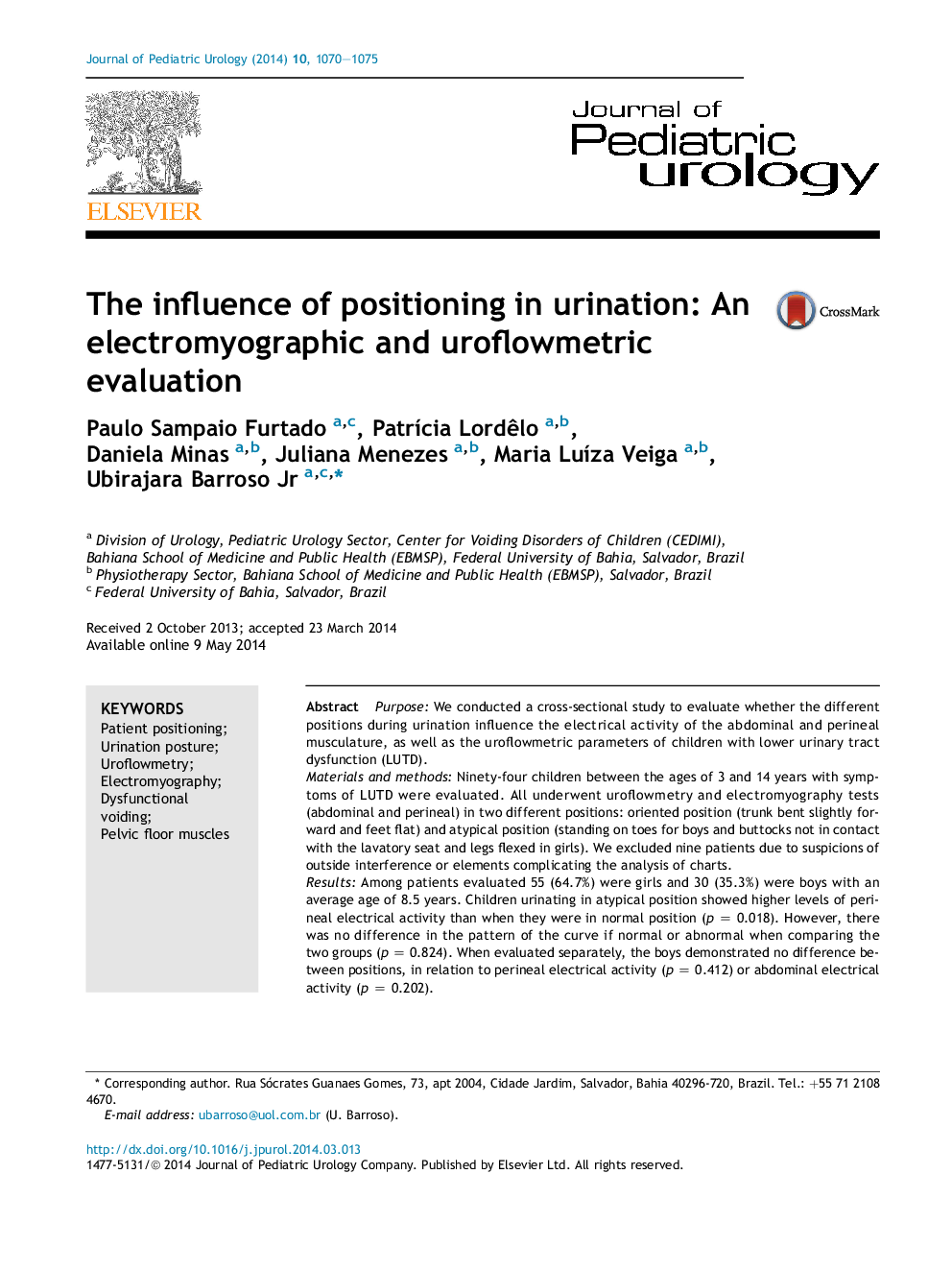| Article ID | Journal | Published Year | Pages | File Type |
|---|---|---|---|---|
| 6218329 | Journal of Pediatric Urology | 2014 | 6 Pages |
PurposeWe conducted a cross-sectional study to evaluate whether the different positions during urination influence the electrical activity of the abdominal and perineal musculature, as well as the uroflowmetric parameters of children with lower urinary tract dysfunction (LUTD).Materials and methodsNinety-four children between the ages of 3 and 14 years with symptoms of LUTD were evaluated. All underwent uroflowmetry and electromyography tests (abdominal and perineal) in two different positions: oriented position (trunk bent slightly forward and feet flat) and atypical position (standing on toes for boys and buttocks not in contact with the lavatory seat and legs flexed in girls). We excluded nine patients due to suspicions of outside interference or elements complicating the analysis of charts.ResultsAmong patients evaluated 55 (64.7%) were girls and 30 (35.3%) were boys with an average age of 8.5 years. Children urinating in atypical position showed higher levels of perineal electrical activity than when they were in normal position (p = 0.018). However, there was no difference in the pattern of the curve if normal or abnormal when comparing the two groups (p = 0.824). When evaluated separately, the boys demonstrated no difference between positions, in relation to perineal electrical activity (p = 0.412) or abdominal electrical activity (p = 0.202).ConclusionsThe electrical activity of the pelvic floor musculature is decreased in the oriented position when compared to atypical positions in female children. Our data suggest that special attention should be given to adopting an adequate posture during urination for girls with LUTD.
